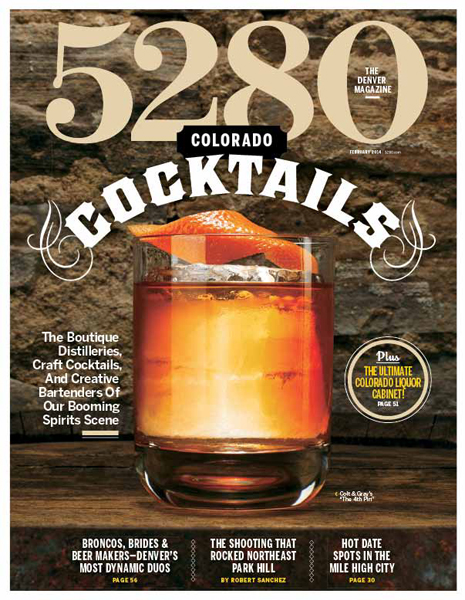The Local newsletter is your free, daily guide to life in Colorado. For locals, by locals.
A few weeks before the New Year, senior staff writer Robert Sanchez and I hopped into my car and drove from our LoDo offices to northeast Park Hill. Close to a year earlier, Sanchez had suggested doing a story on the neighborhood, with a focus on the ongoing battles between the Bloods and the Crips, the Bloods’ rival gang that has territory to both the east and west of Park Hill. It was a compelling pitch: Sanchez would profile this neighborhood, with its rich history, and tell the story of the violence that plagues northeast Park Hill. The piece would also examine why so many people who live in Denver aren’t aware that this war is being waged a few miles, or in some cases, a few blocks, from their own homes.
There would be a positive angle, too—a beacon shining through the darkness of poverty, drugs, and violence. His name was Terrance Roberts. As Sanchez reports in “The Rise & Fall, And Rise & Fall, Of Terrance Roberts” on page 66, Roberts was a rehabbed Blood who’d been shot, done his time in prison, and returned to his neighborhood to try to influence positive change. His nonprofit, which provided outreach for neighborhood kids and gang members, was fittingly named Prodigal Son.
Then, on September 21 of last year, I got a text from Sanchez. Roberts had allegedly shot a Blood just before a rally the previous day in northeast Park Hill; it was not clear if the shooting was fatal. After the shock of the incident had passed, it became apparent that Sanchez’s story would change dramatically. The questions Sanchez was asking in the wake of the shooting were the same questions that so many others were asking: How? And why? As one of Roberts’ friends told Sanchez, “That’s not the Terrance we know.”
The results of Sanchez’s reporting paint the clearest portrait yet of Roberts’ life in the months leading up to the shooting. It is a complex tale of entrenched neighborhood alliances, fierce loyalties, and fickle partnerships—a poignant explication of the arcane codes of street life, and of how the constant want and need for respect can beget violence. Indeed, just as Roberts had appropriated the parable of the prodigal son for his own work, it’s safe to say that Roberts’ own life has become a parable of the often-immutable pressures of spearheading change in our cities’ poorest neighborhoods.
Standing at the old Holly Square Shopping Center, which burned down nearly six years ago and has now been replaced with basketball courts and gazebos and a Boys & Girls Club, I was struck by how normal the neighborhood felt. Yes, there were the signs of violence—bullet holes in walls and the omnipresence of red, the Bloods’ signature color. But…the historic bungalows that line the streets, the people coming in and out of the post office on Hudson Street, the young children playing on the playground just north of the basketball courts—none of what I saw that afternoon suggested we were standing on one of Denver’s most notorious corners of gang violence. And yet, we were. Regardless of what happens in his upcoming trial, Roberts will not be coming back here—or anywhere in Park Hill—to continue his work. The enduring question now is: Who will?
—Photograph by Jeff Nelson









